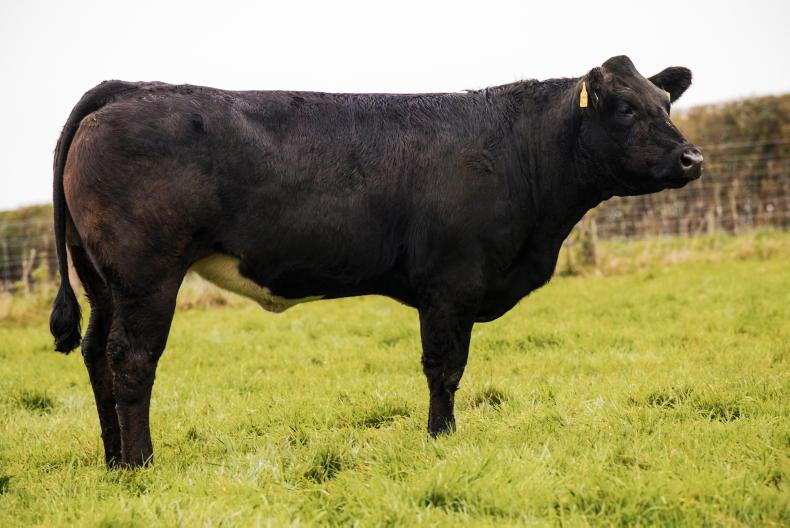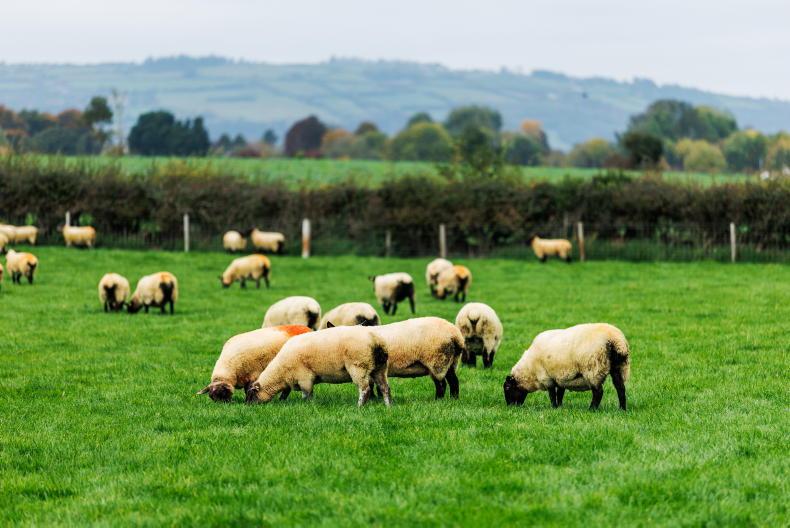Grass growth normally starts to tail off towards the end of August, although the rate of decline depends on factors such as soil fertility, late-season fertiliser, soil type and sward quality.
Therefore, where livestock farmers are planning to graze cattle into October, or even November, they need to start thinking about building grass covers this month.
The rise in chemical fertiliser costs has seen many farmers applying less nitrogen this year and this pattern is unlikely to change over the remainder of the season.
While easing back on fertiliser did not affect peak grass growth in May, June and July, growth is more likely to come under pressure in late summer without some form of nitrogen.
As summer moves into autumn, the dry matter content of grass will be declining and cattle will graze through swards faster.
Combined with the increasing grazing demand of growing cattle, farms can quickly run out of grass if no action was taken to build autumn covers. Outlined are 10 tips to building covers.
1 Late season fertiliser
If there are plans to spread chemical nitrogen, an application of 25 to 30 units/acre before the end of August is recommended.
Days are getting shorter from here on in, which means there will be less of a growth response the later you leave any fertiliser applications. Remember that the closing date for chemical fertiliser applications is 15 September.
Where grazing ground has recently experienced a long dry period, there is likely to be a burst of grass growth once soil moisture is replenished. This can offset the need for late-season nitrogen.
If chemical fertiliser is not an option, clover will also provide nitrogen to drive growth. But realistically, swards will need somewhere in the region of 25% to 30% clover content to make any worthwhile nitrogen contribution.
Organic manures, such as slurry, will also supply nitrogen to the soil. But the amount of nitrogen available to the crop will be lower compared to spring applications.
Also, spreading slurry in late summer presents problems. Firstly, slurry is high in potash, so there is an increased risk of grass tetany in lactating cows.
Also, after applying slurry, paddocks will be closed out of the rotation for two to three weeks depending on the spreading method used.
2 Silage ground
Once second-cut silage has been harvested, bringing this ground back in to rotation will take the pressure off grazing.
The extra ground will make it easier to lengthen the rotation, giving more time for grass to regrow late in the season and allowing covers to build.
3 Extending the grazing
rotation
At the start of August, cattle should still be on a 21-day rotation. This means that once cattle finish with a paddock this week, they should not re-enter this paddock for three weeks.
However, as grass growth starts to slow, the grazing rotation needs to be extended. Aim for a rotation of around 30 days by late August.
This should see cattle making it in to October, weather depending. All being well, this rotation length will hopefully see grazing extend into early November on drier land.
4 Leaving a higher residual
Grass has now passed the heading out phase, so sward quality should be easier to manage in each rotation. Therefore, there is less need to graze out swards tight to the ground.
Leaving a slightly higher residual cover between 5cm and 6cm will speed up grass regrowth in late summer and early autumn, increasing covers for the next grazing.
5 Using a back fence to
protect grazed grass
Using a back fence to protect grazed areas will improve regrowth and again, help build covers as grazing enters late summer and early autumn.
6 Strip grazing or smaller grass allocations
Ground conditions are relatively good at present and strip grazing, or reducing grass allocations to 24- or 48-hour breaks in August, will improve utilisation.
With cattle confined to smaller grazing areas, this should help covers build in the paddocks ahead of stock. It will take a few days to gauge how much grass to give cattle for a 24- or 48-hour allocation so they remain settled.
Once ground conditions start to get softer, grazing allocations should be increased or revert back to grazing paddocks every three to four days.
7 Meal feeding to reduce grass intakes
Offering concentrates to spring-born calves and stores destined for sale this autumn can deliver benefits.
First off, liveweight gain will improve in late summer as will cattle condition, making animals more saleable.
Secondly, meal feeding will reduce grazing demand, thereby slowing the rotation and allow grass covers to build.
8 Early housing of forward stores for finishing
If the herd is under movement restriction, consider housing forward stores that are within 100kg of their target finishing weight at the outset of September.
Grass dry matter will be falling in September, so cattle will take in less energy from the forage part of their diet. Unless concentrate intakes increase, weight gain will suffer.
Housing at the outset of September, and intensively finishing over an 80- to 100-day period, will see cattle achieve higher performance compared to grazing into October and feeding meal at grass.
While grazing into October may initially be cheaper, once housed, these cattle are unlikely to be finished until February or March.
Housing in early autumn will get cattle out of the system much earlier, and be much more cost-effective in the long run, as well as reducing grazing demand.
9 Early scanning and offload passengers
For suckler herds calving from February to May, cows should now be settled in calf. Scanning cows in early September will highlight barren animals.
These cows can either be weaned early and sold live, sold as suckler outfits after scanning or housed for a short intensive finishing period.
10 Early weaning
Spring-born calves will be more reliant on grass and concentrates in autumn than milk from the cow. Weaning calves in a gradual manner will reduce grazing demand as cows are dried off, taking the pressure off the system in autumn.
Allowing calves to creep graze ahead of cows, or introducing a creep feeder, will gradually break the cow and calf bond and make the transition through weaning less stressful.
Read more
6,000 cattle herds exit production over the last decade
Thrive: countdown to demonstration farm open day
Grass growth normally starts to tail off towards the end of August, although the rate of decline depends on factors such as soil fertility, late-season fertiliser, soil type and sward quality.
Therefore, where livestock farmers are planning to graze cattle into October, or even November, they need to start thinking about building grass covers this month.
The rise in chemical fertiliser costs has seen many farmers applying less nitrogen this year and this pattern is unlikely to change over the remainder of the season.
While easing back on fertiliser did not affect peak grass growth in May, June and July, growth is more likely to come under pressure in late summer without some form of nitrogen.
As summer moves into autumn, the dry matter content of grass will be declining and cattle will graze through swards faster.
Combined with the increasing grazing demand of growing cattle, farms can quickly run out of grass if no action was taken to build autumn covers. Outlined are 10 tips to building covers.
1 Late season fertiliser
If there are plans to spread chemical nitrogen, an application of 25 to 30 units/acre before the end of August is recommended.
Days are getting shorter from here on in, which means there will be less of a growth response the later you leave any fertiliser applications. Remember that the closing date for chemical fertiliser applications is 15 September.
Where grazing ground has recently experienced a long dry period, there is likely to be a burst of grass growth once soil moisture is replenished. This can offset the need for late-season nitrogen.
If chemical fertiliser is not an option, clover will also provide nitrogen to drive growth. But realistically, swards will need somewhere in the region of 25% to 30% clover content to make any worthwhile nitrogen contribution.
Organic manures, such as slurry, will also supply nitrogen to the soil. But the amount of nitrogen available to the crop will be lower compared to spring applications.
Also, spreading slurry in late summer presents problems. Firstly, slurry is high in potash, so there is an increased risk of grass tetany in lactating cows.
Also, after applying slurry, paddocks will be closed out of the rotation for two to three weeks depending on the spreading method used.
2 Silage ground
Once second-cut silage has been harvested, bringing this ground back in to rotation will take the pressure off grazing.
The extra ground will make it easier to lengthen the rotation, giving more time for grass to regrow late in the season and allowing covers to build.
3 Extending the grazing
rotation
At the start of August, cattle should still be on a 21-day rotation. This means that once cattle finish with a paddock this week, they should not re-enter this paddock for three weeks.
However, as grass growth starts to slow, the grazing rotation needs to be extended. Aim for a rotation of around 30 days by late August.
This should see cattle making it in to October, weather depending. All being well, this rotation length will hopefully see grazing extend into early November on drier land.
4 Leaving a higher residual
Grass has now passed the heading out phase, so sward quality should be easier to manage in each rotation. Therefore, there is less need to graze out swards tight to the ground.
Leaving a slightly higher residual cover between 5cm and 6cm will speed up grass regrowth in late summer and early autumn, increasing covers for the next grazing.
5 Using a back fence to
protect grazed grass
Using a back fence to protect grazed areas will improve regrowth and again, help build covers as grazing enters late summer and early autumn.
6 Strip grazing or smaller grass allocations
Ground conditions are relatively good at present and strip grazing, or reducing grass allocations to 24- or 48-hour breaks in August, will improve utilisation.
With cattle confined to smaller grazing areas, this should help covers build in the paddocks ahead of stock. It will take a few days to gauge how much grass to give cattle for a 24- or 48-hour allocation so they remain settled.
Once ground conditions start to get softer, grazing allocations should be increased or revert back to grazing paddocks every three to four days.
7 Meal feeding to reduce grass intakes
Offering concentrates to spring-born calves and stores destined for sale this autumn can deliver benefits.
First off, liveweight gain will improve in late summer as will cattle condition, making animals more saleable.
Secondly, meal feeding will reduce grazing demand, thereby slowing the rotation and allow grass covers to build.
8 Early housing of forward stores for finishing
If the herd is under movement restriction, consider housing forward stores that are within 100kg of their target finishing weight at the outset of September.
Grass dry matter will be falling in September, so cattle will take in less energy from the forage part of their diet. Unless concentrate intakes increase, weight gain will suffer.
Housing at the outset of September, and intensively finishing over an 80- to 100-day period, will see cattle achieve higher performance compared to grazing into October and feeding meal at grass.
While grazing into October may initially be cheaper, once housed, these cattle are unlikely to be finished until February or March.
Housing in early autumn will get cattle out of the system much earlier, and be much more cost-effective in the long run, as well as reducing grazing demand.
9 Early scanning and offload passengers
For suckler herds calving from February to May, cows should now be settled in calf. Scanning cows in early September will highlight barren animals.
These cows can either be weaned early and sold live, sold as suckler outfits after scanning or housed for a short intensive finishing period.
10 Early weaning
Spring-born calves will be more reliant on grass and concentrates in autumn than milk from the cow. Weaning calves in a gradual manner will reduce grazing demand as cows are dried off, taking the pressure off the system in autumn.
Allowing calves to creep graze ahead of cows, or introducing a creep feeder, will gradually break the cow and calf bond and make the transition through weaning less stressful.
Read more
6,000 cattle herds exit production over the last decade
Thrive: countdown to demonstration farm open day










SHARING OPTIONS